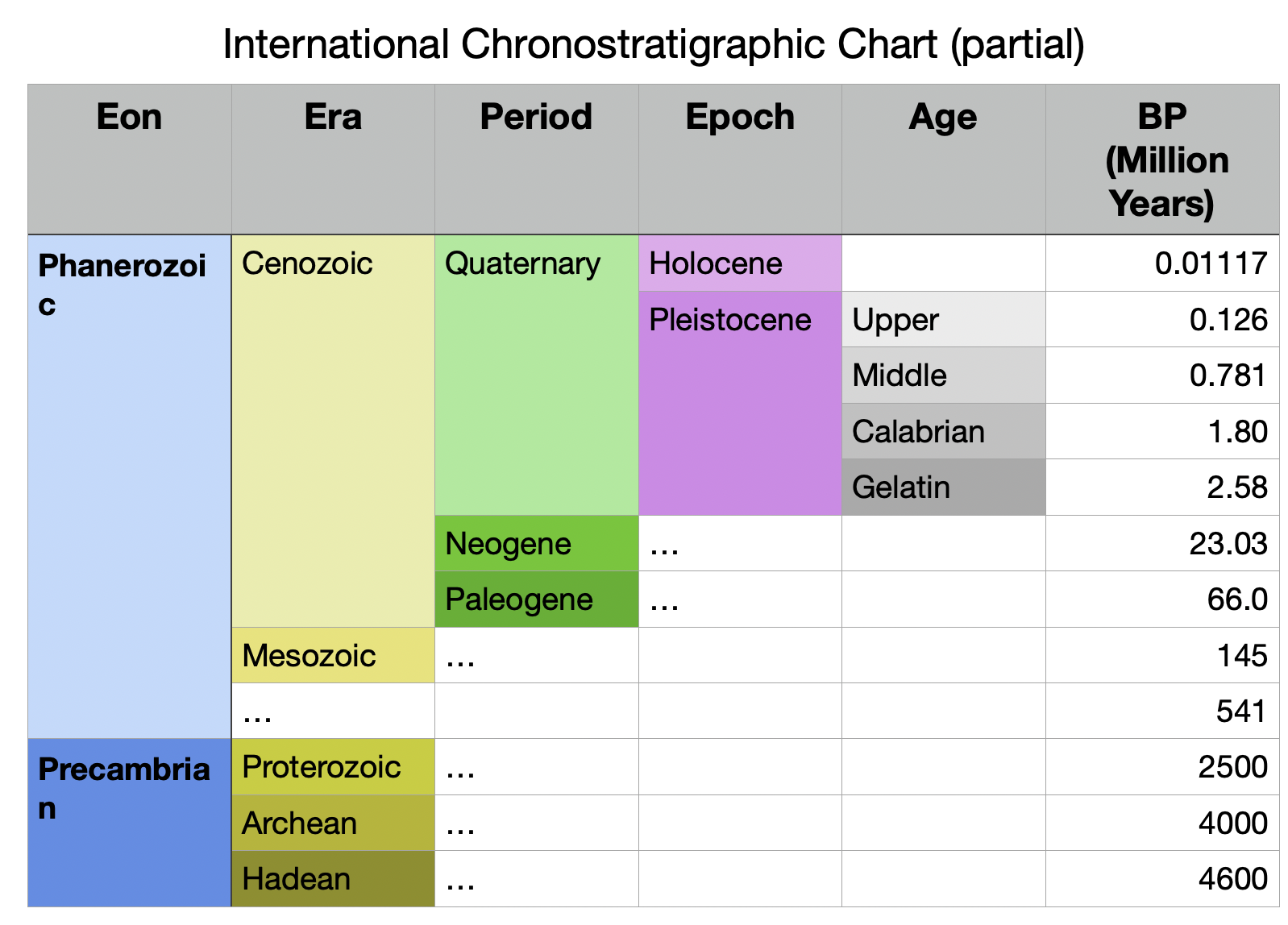Defining the Past
The scientific framework used to describe Earth’s history is the International Geological Time Scale. It is defined primarily through the study of rock layers (stratigraphy) and the fossil record. This time scale divides Earth’s past into four Eons, which are further divided into Eras, Periods, Epochs, and Ages, as shown in the International Chronostratigraphic Chart.
If I reproduce the complete chart, you will see that no Age is called the Paleolithic Age. The word Paleolithic is derived from two Greek words meaning “old” and “stone.” The Paleolithic is the Old Stone Age and refers to the time when people were making relatively primitive stone tools. It roughly corresponds to the Pleistocene Epoch. We are currently in the Holocene Epoch.

Note that the calendar is not marked by BC or BCE, but by BP, meaning “Before Present.” “Present” refers to a specific date: January 1st, 1950. After that time, nuclear weapon testing artificially disrupted the isotopic composition of atmospheric carbon, necessitating recalibrations of carbon dating.
Now that we have a rigorous vocabulary to refer to our past, let’s see how our planet has metamorphosed throughout the ages.